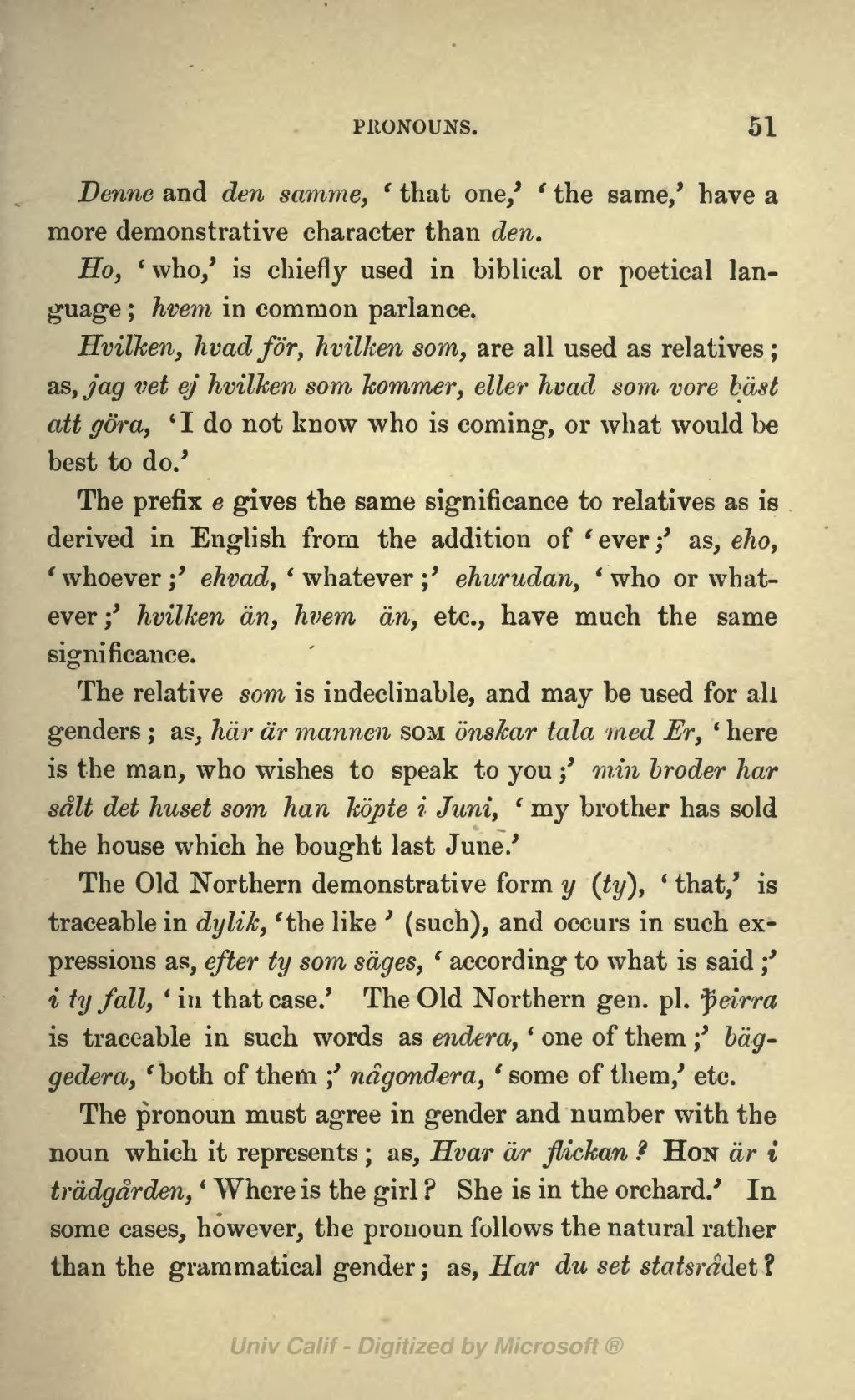Denne and den samme, 'that one,' 'the same,' have a more demonstrative character than den.
Ho, 'who' is chiefly used in biblical or poetical language; hvem in common parlance.
Hvilken, hvad för, hvilhen som, are all used as relatives; as, jag vet ej hvilken som kommer, eller hvad som vore bäst att göra, 'I do not know who is coming, or what would be best to do.'
The prefix e gives the same significance to relatives as is derived in English from the addition of 'ever;' as, eho, 'whoever;' ehvad, 'whatever;' ehurudan, 'who or whatever;' hvilken än, hvem än, etc., have much the same significance.
The relative som is indeclinable, and may be used for all genders; as, här är mannen som önskar tala med Er, 'here is the man, who wishes to speak to you;' min hroder har sålt det huset som han köpte i Juni, 'my brother has sold the house which he bought last June.'
The Old Northern demonstrative form y (ty), 'that,' is
traceable in dylik, 'the like' (such), and occurs in such expressions as, efter ty som säges, 'according to what is said;'
i ty fall, 'in that case.' The Old Northern gen. pl. ![]() eirra
is traceable in such words as endera, 'one of them;' bäggedera, 'both of them;' någondera, 'some of them,' etc.
eirra
is traceable in such words as endera, 'one of them;' bäggedera, 'both of them;' någondera, 'some of them,' etc.
The pronoun must agree in gender and number with the noun which it represents; as, Hvar är flickan? Hon är i trädgården, 'Where is the girl ? She is in the orchard.' In some cases, however, the pronoun follows the natural rather than the grammatical gender; as, Har du set statsrådet?
